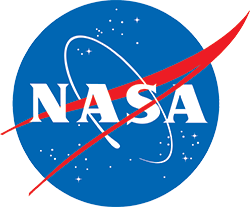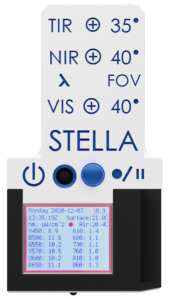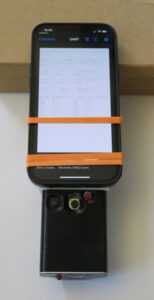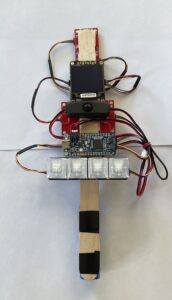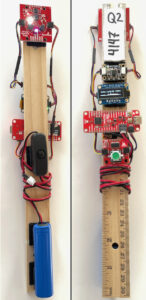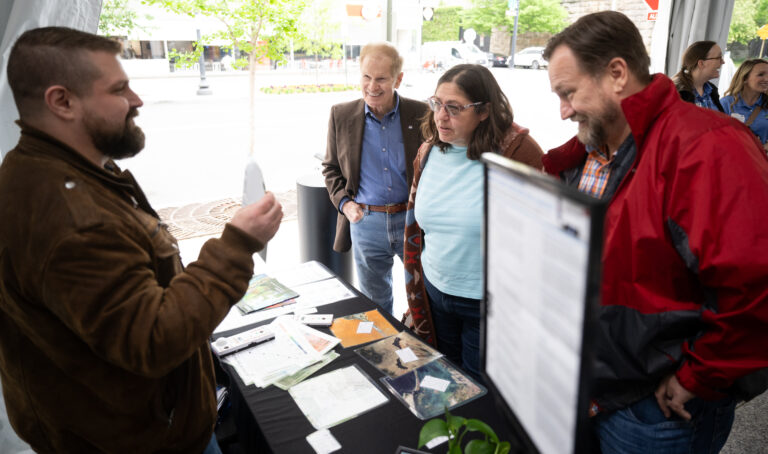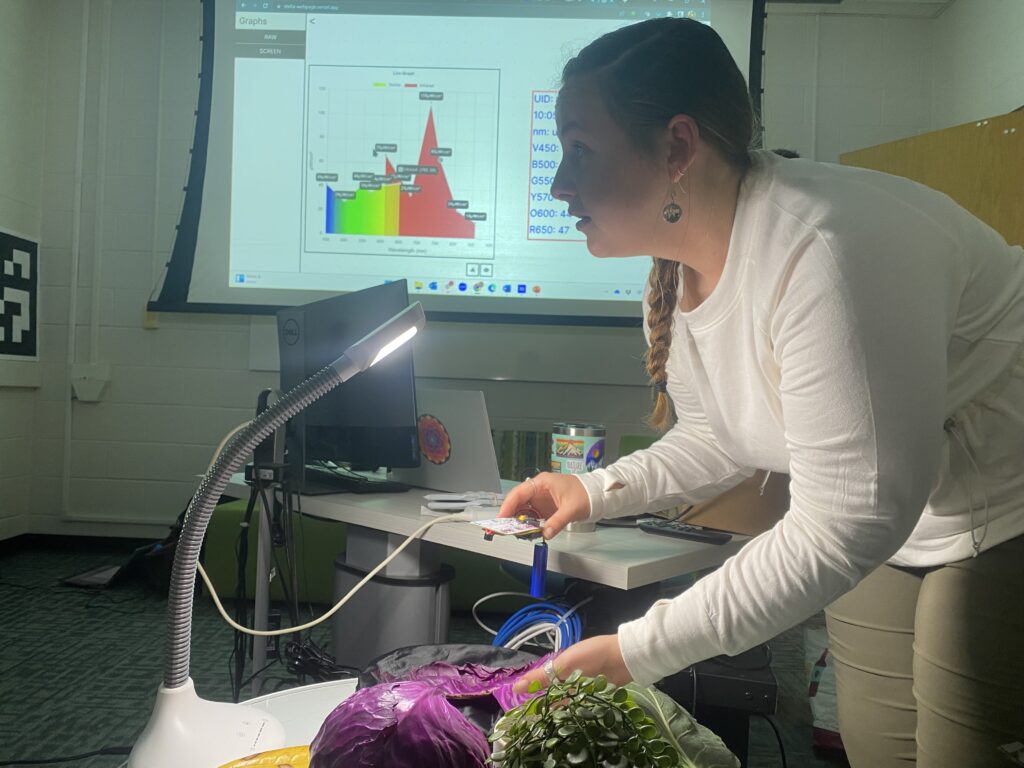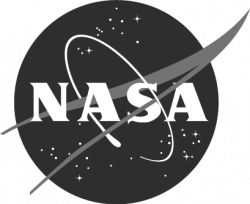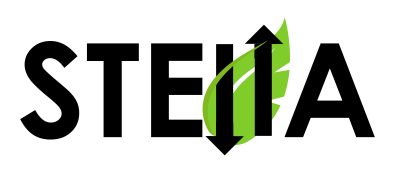
The STELLA (Science and Technology Education for Land/Life Assessment) project uses spectrometers that can be built with low-cost components and 3D printed housings to introduce NASA Earth observation technologies and provide authentic hands-on learning experiences for remote sensing education. STELLA instruments help engage students in the quantitative aspects of satellite data, provide insight into the scientific process, and encourage analytical thinking.
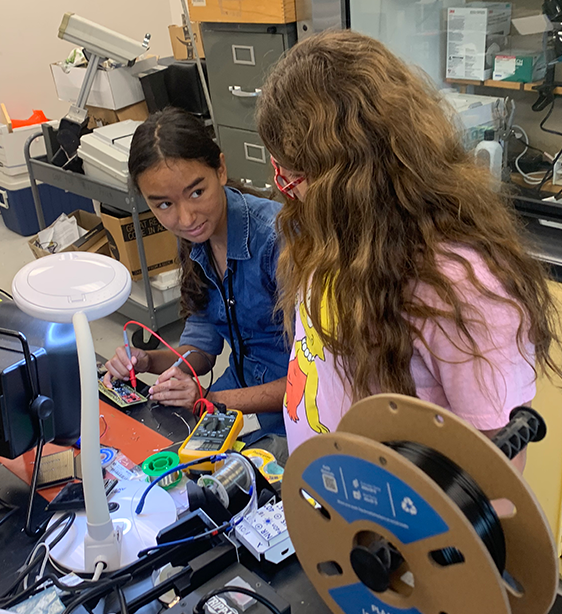
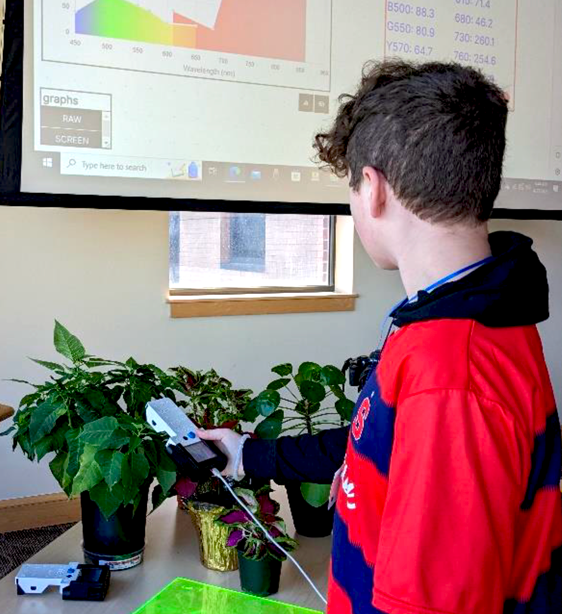
STELLA Spectrometers
STELLA spectrometers measure energy throughout the visible and infrared portions of the electromagnetic spectrum. These DIY devices can be built with inexpensive and widely-available components.
There are four versions of the STELLA spectrometer to accommodate a variety of interests and needs. Assembly of the STELLA-1.0 and 2.0 versions requires soldering and 3D printing. The STELLA-Q and Q2 versions do not require soldering or 3D printing and are ideal for students of all ages. All units use CircuitPython, a beginner-friendly version of the open-source Python programming language.
Data Viewer
Data collected by the STELLA spectrometers can be displayed and analyzed using the Data Viewer. This spectral data reveals information about the physical environment beyond what the human eye can see such as vegetation health, moisture content, and mineral composition.
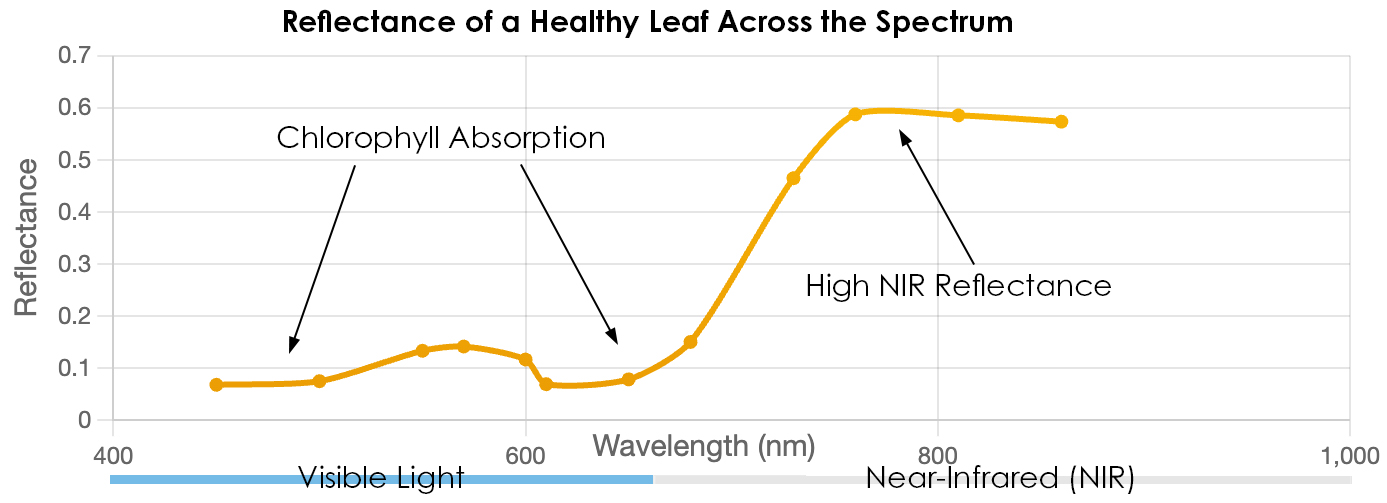
STELLA for Outreach
STELLA spectrometers help engage the public by demonstrating how multispectral data are collected by remote sensing instruments like those on the Landsat satellite. The current versions of STELLA spectrometers sense visible and near-infrared wavelengths—portions of the electromagnetic spectrum also observed by Landsat. However, the modular nature of STELLA’s open-source design enables modification to fit outreach demonstrations for other Earth-observing missions.
STELLA for Education
STELLA introduces students to remote sensing concepts through hands-on instrument development and data collection. By building their own spectrometers, students are exposed to mechanical and electrical engineering concepts such as sensor assembly and light detection. By using their devices to collect data samples, students can learn how spectrometers work and discover proper data collection practices. Students can also learn about instrument calibration by ensuring consistent and precise measurements from STELLA units. Additionally, they can learn the basic programming skills needed to ingest and analyze the data.
Note: STELLA is solely an educational and outreach tool designed to help students and the community learn about Landsat and remote sensing. The performance of STELLA has not been scientifically peer-reviewed and data retrieved should be used for educational purposes only. Find more information on the capabilities and limitations of STELLA data in Technical Details.
STELLA News
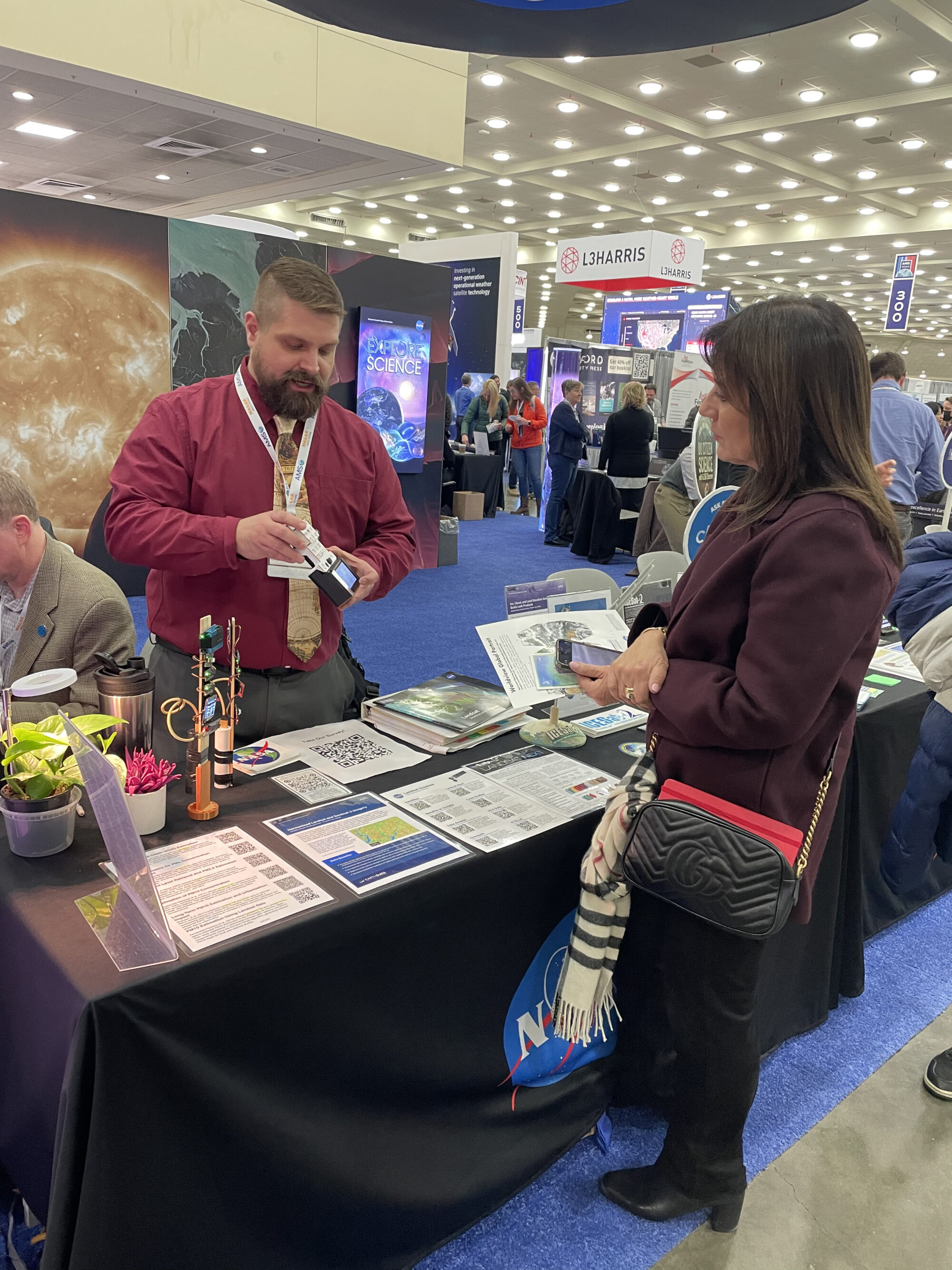
Landsat Outreach at the 2024 American Meteorological Society Meeting
This year, AMS meeting-goers had an opportunity to learn more about Landsat, its data, and its applications at the NASA Exhibit Booth.

Advancing Landsat Science at AGU23
The 2023 American Geophysical Union Fall Meeting (AGU23) was held in San Francisco, California, from December 11-15. The Landsat program has repeatedly had a strong presence at AGU meetings and it occupied a prominent position among presenters at AGU23.
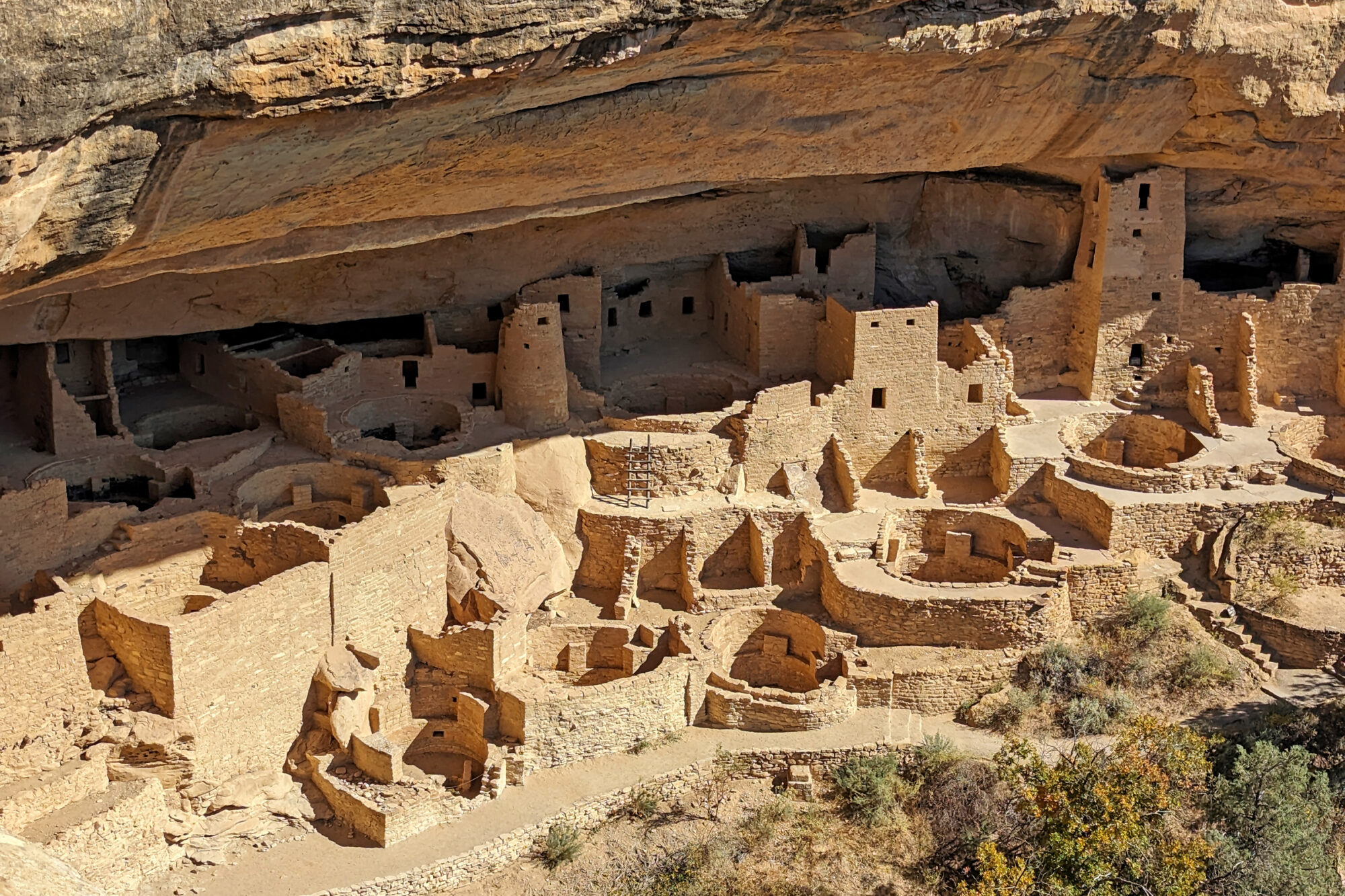
Shining a Light on Mesa Verde National Park: NASA Outreach During the “Ring of Fire” Solar Eclipse
On Saturday, October 14, 2023, regions of North, Central, and South America experienced an annular solar eclipse. Through the Earth to Sky Partnership, NASA coordinated with Mesa Verde National Park to host a series of outreach events.
* Any use of trade, firm, or product names is for descriptive purposes only and does not imply endorsement by the U.S. Government.
